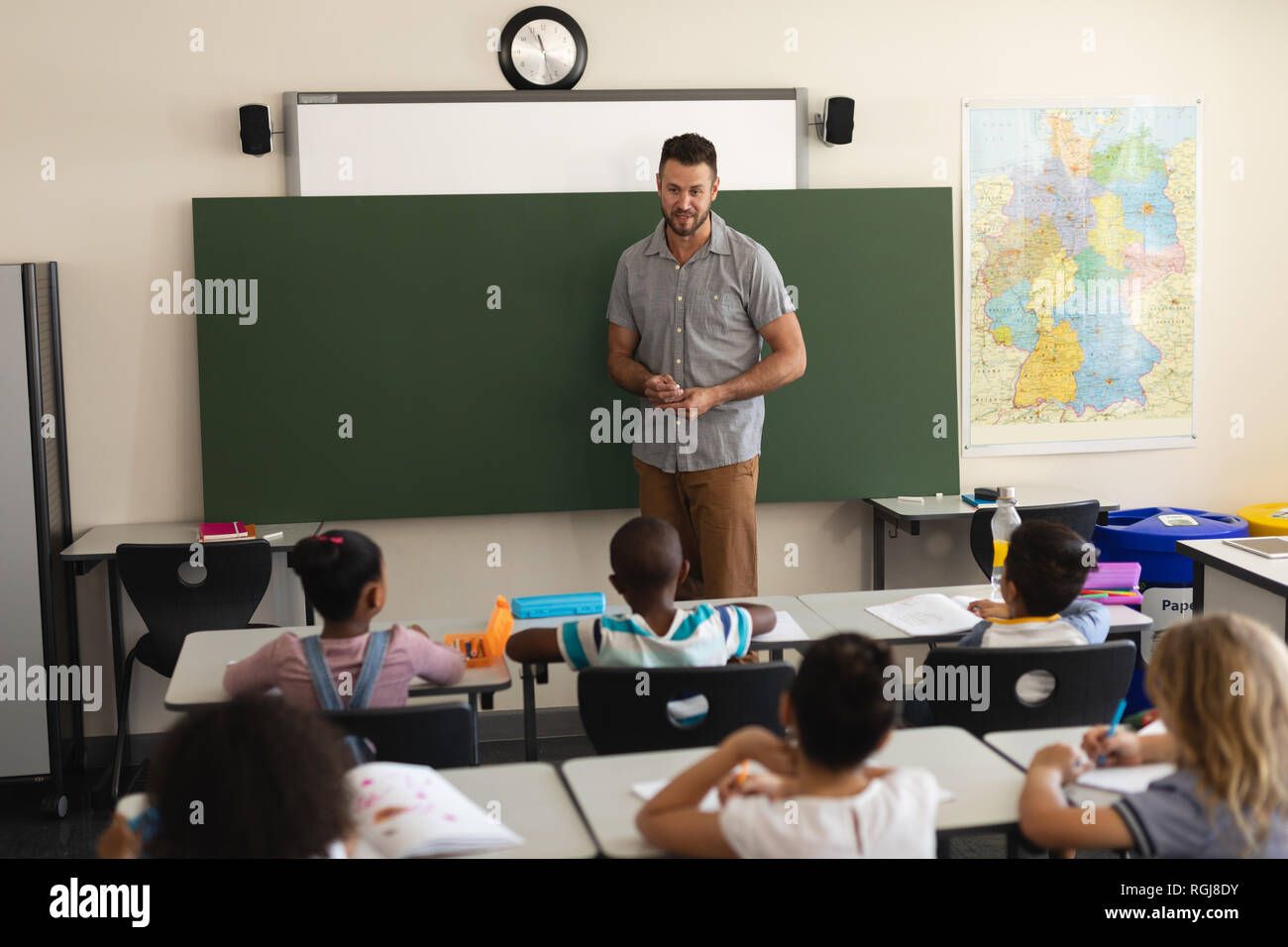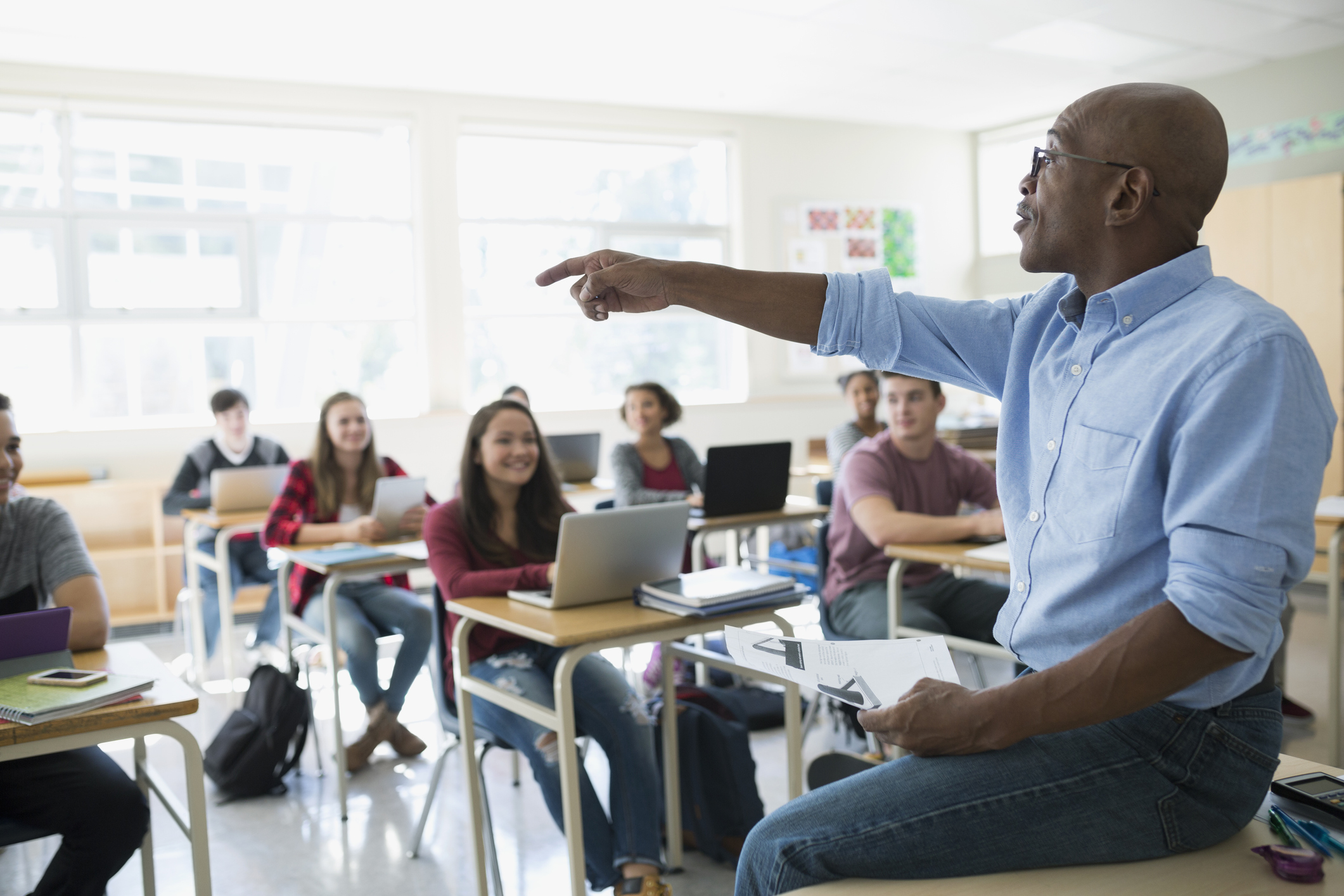Unlock Your Child’s Potential with Primary Science Tuition Singapore
Unlock Your Child’s Potential with Primary Science Tuition Singapore
Blog Article
Exploring the Various Teaching Approaches in Primary Scientific Research Education Today
The landscape of primary scientific research education is advancing, with numerous mentor techniques obtaining prominence in contemporary class. Inquiry-based knowing, hands-on experiments, and the integration of modern technology are redefining just how instructors involve young minds. In addition, collaborative methods and differentiated direction are being utilized to accommodate the varied needs of trainees, boosting both interaction and understanding. As we examine these methods, questions develop regarding their effectiveness and the effects for future educational techniques. What might these shifts in approach mean for the next generation of students?
Inquiry-Based Knowing
Inquiry-Based Knowing (IBL) is a pedagogical technique that motivates students to discover clinical ideas through questioning, examination, and hands-on testing. This technique highlights the role of pupils as energetic participants in their knowing, promoting crucial thinking and analytical skills. By involving with real-world concerns, pupils end up being inspired and curious, which improves their understanding of scientific concepts.
In IBL, instructors function as facilitators, directing trainees as they navigate their questions instead than supplying information straight. This student-centered method permits for differentiation, fitting numerous learning rates and designs. Trainees create skills in formulating hypotheses, creating experiments, and analyzing data, which are crucial for clinical proficiency.
Furthermore, IBL fosters partnership among students, urging them to share findings and ideas. This collective questions promotes social abilities and a sense of community within the class. Furthermore, the process of query urges strength, as pupils discover to welcome failure as a tipping rock towards understanding.
Hands-On Experiments
Hands-on experiments are a vital component of effective scientific research education and learning, complementing the concepts of inquiry-based learning. These experiments permit students to engage straight with scientific ideas, promoting a much deeper understanding via experiential knowing. By adjusting products and observing results, young students can realize abstract concepts in concrete ways.
Such activities promote essential reasoning and analytic skills, as students hypothesize results, conduct experiments, and evaluate outcomes. This procedure motivates them to ask inquiries, refine their understanding, and develop a clinical state of mind. Hands-on experiments can be customized to diverse learning designs, making sure that all trainees have the opportunity to engage meaningfully with the content.
Moreover, hands-on experiments frequently urge partnership among peers, promoting teamwork and communication skills. Functioning in teams enables pupils to share concepts, review searchings for, and learn from each other, which enhances their total instructional experience.
Integrating hands-on experiments into the key scientific research educational program not just enhances the discovering atmosphere yet likewise grows a long-lasting interest in scientific research. By proactively joining their education and learning, trainees are most likely to develop a passion for clinical inquiry that extends past the class.

Innovation Combination
Integrating modern technology into main scientific research education and learning has come to be significantly essential in cultivating student interaction and boosting learning end results. The use of electronic devices, such as interactive simulations, virtual laboratories, and educational software application, supplies students with opportunities to explore clinical ideas in innovative methods. These resources assist in a deeper understanding of intricate topics by permitting students to picture and adjust variables that would be unwise in a typical classroom setting.
Moreover, modern technology combination motivates individualized finding out experiences. Students can advance at their own pace, reviewing tough ideas via multimedia sources, which provide to different knowing designs. This adaptability not only sustains individual growth but also grows a sense of freedom in students.
Furthermore, innovation works as a bridge to real-world science, connecting trainees with existing study and expert payments. Accessibility to scientific journals and on the internet data sources widens pupils' viewpoints on clinical query and fosters crucial thinking abilities.
Collaborative Learning
Collective knowing plays an essential duty in key scientific research education by fostering teamwork and interaction skills among students. This approach motivates students to work together, share understanding, and participate in analytical, which improves their understanding of scientific concepts. By joining team tasks, read this post here students learn to verbalize their ideas, listen to diverse viewpoints, and work out remedies, every one of which are essential abilities in both scholastic and real-world contexts.

Research shows that collaborative understanding can result in increased motivation and involvement in scientific research topics, as pupils find pleasure in shared experiences (primary science tuition Singapore). Additionally, this approach prepares trainees for future collective undertakings, equipping them with the abilities necessary for effective synergy in higher education and professional environments. Ultimately, welcoming collective discovering in main scientific research education and learning can substantially enhance the learning experience and promote a much deeper understanding of scientific questions
Differentiated Guideline

Separated instruction can show up in various ways, such as varying the content, processes, or products of understanding. For instance, instructors might use tiered assignments that offer varying degrees of intricacy, enabling pupils to function at their respective preparedness degrees. In addition, versatile organizing strategies can facilitate cooperation amongst students with different capabilities, fostering peer knowing.
Assessment plays an important function in this technique, as it educates instruction and aids educators understand each student's distinct requirements. Formative evaluations, such as monitorings and quizzes, additional reading can assist educators in readjusting their strategies to enhance discovering results. primary science tuition Singapore. Eventually, by applying set apart instruction in key scientific research education and learning, teachers can cultivate a more equitable and efficient knowing atmosphere, empowering all pupils to reach their complete possibility in comprehending scientific sensations
Conclusion
In summary, the diverse training strategies in primary science education, consisting of i thought about this inquiry-based discovering, hands-on experiments, modern technology combination, collaborative discovering, and distinguished instruction, jointly add to an extra reliable knowing environment. These approaches advertise essential thinking, analytic abilities, and a deeper understanding of clinical principles. By implementing these techniques, educators can create supportive and engaging classrooms that address the varied needs of pupils, inevitably fostering a long-lasting interest in scientific research and enhancing academic success.
Inquiry-Based Discovering (IBL) is an instructional technique that urges students to explore clinical ideas with wondering about, examination, and hands-on experimentation.Collective discovering plays a crucial function in main science education by promoting synergy and interaction skills amongst pupils.Study shows that collective discovering can lead to increased motivation and interaction in science topics, as pupils discover enjoyment in common experiences.In promoting a comprehensive knowing atmosphere, set apart direction arises as a key approach to fit the diverse requirements and capabilities of trainees in key scientific research education and learning. Eventually, by applying distinguished instruction in key scientific research education and learning, educators can grow a more efficient and fair learning atmosphere, equipping all pupils to reach their full potential in understanding scientific phenomena.
Report this page